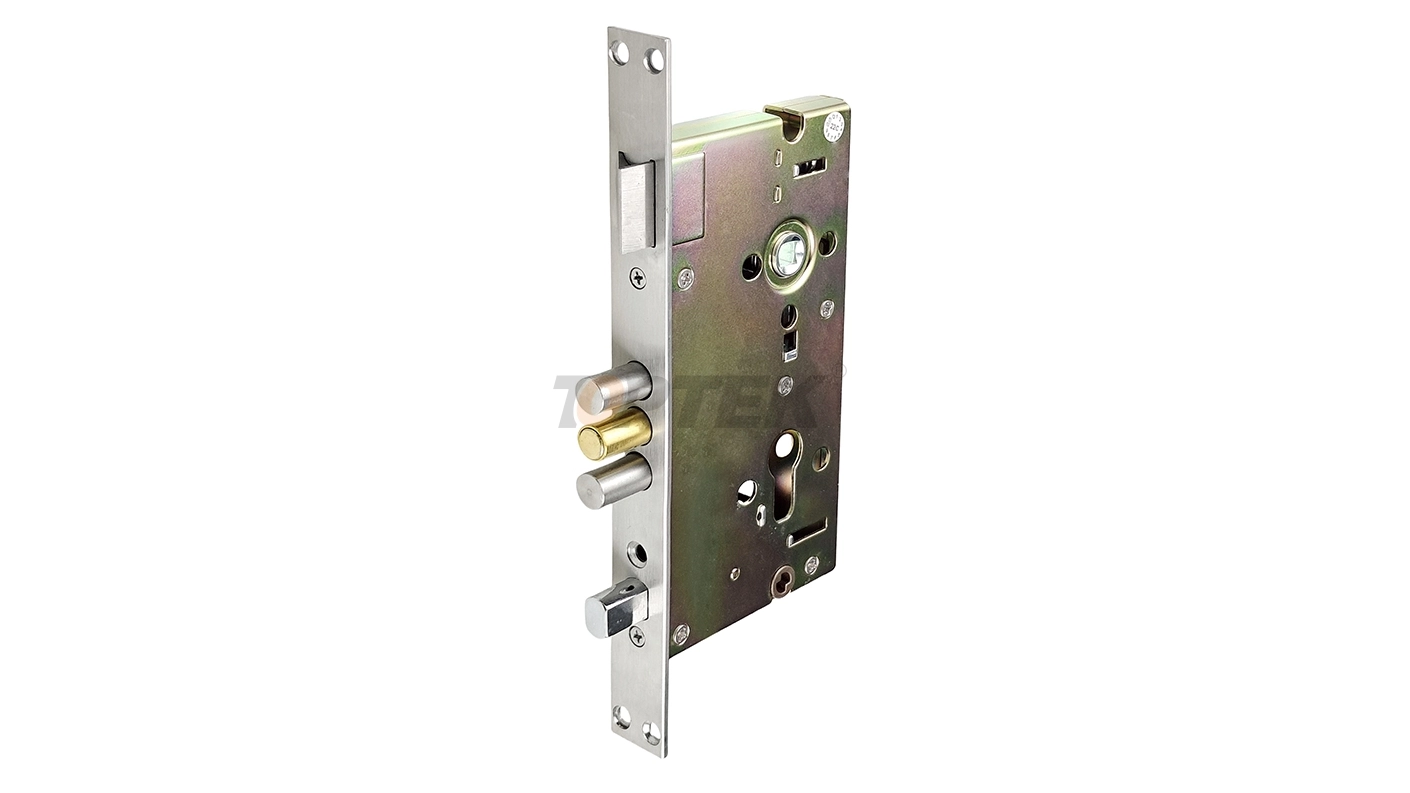Ever found yourself locked out of your home, office, or wondering how secure your cylindrical lock really is? Lock picking might seem like a skill reserved for locksmiths and movie characters, but understanding the basics can be surprisingly useful. Whether you're a curious homeowner, aspiring locksmith, or someone interested in security, learning how cylindrical locks work—and how they can be picked—offers valuable insights into home security.
Before we dive in, it's important to note that lock picking should only be performed on locks you own or have explicit permission to pick. This guide is for educational purposes and to help you better understand your home's security vulnerabilities.
Understanding Cylindrical Locks
A cylindrical lock is one of the most common types of door locks found in residential and commercial buildings. Unlike deadbolts that extend deep into the door frame, cylindrical locks are installed through a large hole drilled in the door and secure it using a latch mechanism.
These locks consist of several key components: the outer knob or lever, the inner mechanism housing the cylinder, and the latch that extends into the door frame. The cylinder contains pins of varying lengths that must align perfectly with the shear line when the correct key is inserted.
Most cylindrical locks use a pin tumbler system. When you insert the wrong key—or no key at all—these pins block the cylinder from turning. The goal of lock picking is to manipulate these pins to the correct position without using the original key.
Essential Tools for Picking Cylindrical Locks
Successful lock picking requires the right tools. Professional locksmiths and security experts typically use a basic set that includes:
Tension wrench: This L-shaped tool applies rotational pressure to the lock cylinder. You'll insert this at the bottom of the keyway and maintain steady pressure throughout the picking process.
Pick tools: The most common is a hook pick, which allows you to manipulate individual pins. Rake picks can move multiple pins simultaneously, though they're less precise.
Bobby pins or paperclips: While not ideal, these household items can serve as makeshift tools for basic cylindrical locks. Straighten a paperclip for picking and bend another into an L-shape for tension.
Quality matters when selecting tools. Professional-grade picks provide better feedback and control, making the process more efficient and less likely to damage the lock.
Step-by-Step Lock Picking Process
Preparing Your Workspace
Start by ensuring you have adequate lighting and a comfortable position. Lock picking requires patience and concentration, so eliminate distractions. Have your tools organized and within easy reach.
Insert the tension wrench into the bottom of the keyway, applying gentle clockwise pressure (counterclockwise for some locks). The pressure should be firm enough to feel resistance but light enough that you don't bind the pins.
Setting the Pins
Insert your pick tool above the tension wrench and locate the pins inside the cylinder. You'll feel them as small spring-loaded obstacles. The technique involves lifting each pin to the correct height where it aligns with the shear line.
Start with the pin that offers the most resistance—this is typically the binding pin. Gently lift it while maintaining tension with your wrench. You'll hear a subtle click when the pin sets correctly. The cylinder may also turn slightly, indicating progress.
Move systematically through each pin, maintaining consistent tension. Some pins may spring back down, requiring you to reset them. This is normal and part of the learning process.
Opening the Lock
Once all pins are properly set, the cylinder should turn freely under the pressure from your tension wrench. The lock will open, and you can turn the knob or handle to retract the latch.
If the cylinder doesn't turn after working all the pins, release tension slowly and start over. Sometimes pins can be overset, requiring a fresh approach.
Common Challenges
Lock picking isn't always straightforward. Many beginners struggle with applying the correct amount of tension—too much pressure binds the pins, while too little provides insufficient feedback.
Pin springs can be surprisingly strong, and maintaining the proper position for multiple pins simultaneously takes practice. Some cylindrical locks include security features like serrated pins or mushroom pins that make picking more difficult.
Environmental factors affect success rates too. Dirty or worn locks may have sticky pins, while new locks might have tighter tolerances that require more precise manipulation.

Legal and Ethical Considerations
Lock picking exists in a legal gray area that varies by jurisdiction. Generally, picking locks you own is legal, but carrying lock picking tools in public may be illegal in some areas. Always research local laws before acquiring or using these tools.
The ethical implications are equally important. Use these skills responsibly—never attempt to pick locks you don't own without explicit permission. Consider the knowledge a way to better understand and improve your own security rather than a means to bypass others' property.
Improving Your Cylindrical Lock Security
Understanding how cylindrical locks can be picked helps you make better security decisions. Higher-grade locks often include additional security features like anti-pick pins, tighter tolerances, and more durable materials.
Consider upgrading to Grade 1 cylindrical locks if security is a priority. These locks meet stricter standards for both physical durability and pick resistance. Adding a deadbolt provides additional security since it uses a different locking mechanism.
Regular maintenance keeps your locks functioning properly and may actually improve security. Clean cylinders with graphite lubricant periodically, and replace locks that feel loose or sticky.
Building Your Skills Safely
Practice makes perfect, but start with inexpensive practice locks rather than the locks protecting your home. Many locksmiths sell old or defective cylindrical locks perfect for learning.
Join online communities focused on lock picking and security. These groups provide valuable guidance, tool recommendations, and ethical guidelines for developing your skills responsibly.
Consider formal training if you're seriously interested in locksmithing or security. Professional courses provide structured learning and ensure you understand both the technical and legal aspects of the trade.
Mastering Cylindrical Lock Security
Learning to pick a cylindrical lock provides valuable insights into how these common security devices work and fail. The process requires patience, practice, and the right tools, but the knowledge gained helps you make informed decisions about your own security.
Remember that lock picking is just one aspect of comprehensive security. Even the most sophisticated cylindrical lock won't protect against other vulnerabilities like weak door frames, exposed hinges, or nearby windows.
Use this knowledge responsibly to improve your understanding of security systems and make better choices about protecting your property. Whether you're locked out of your own home or simply curious about how things work, these skills can prove surprisingly useful.
Cylindrical Lock
commercial Cylinderical
Grade 2 Cylindrical Locks
English
العربية
Français
Русский
Español
Português
Deutsch
italiano
日本語
한국어
Nederlands
Tiếng Việt
ไทย
Polski
Türkçe
አማርኛ
ພາສາລາວ
ភាសាខ្មែរ
Bahasa Melayu
ဗမာစာ
தமிழ்
Filipino
Bahasa Indonesia
magyar
Română
Čeština
Монгол
қазақ
Српски
हिन्दी
فارسی
Kiswahili
Slovenčina
Slovenščina
Norsk
Svenska
українська
Ελληνικά
Suomi
Հայերեն
עברית
Latine
Dansk
اردو
Shqip
বাংলা
Hrvatski
Afrikaans
Gaeilge
Eesti keel
Māori
සිංහල
नेपाली
Oʻzbekcha
latviešu
অসমীয়া
Aymara
Azərbaycan dili
Bamanankan
Euskara
Беларуская мова
भोजपुरी
Bosanski
Български
Català
Cebuano
Corsu
ދިވެހި
डोग्रिड ने दी
Esperanto
Eʋegbe
Frysk
Galego
ქართული
guarani
ગુજરાતી
Kreyòl ayisyen
Hausa
ʻŌlelo Hawaiʻi
Hmoob
íslenska
Igbo
Ilocano
Basa Jawa
ಕನ್ನಡ
Kinyarwanda
गोंगेन हें नांव
Krio we dɛn kɔl Krio
Kurdî
Kurdî
Кыргызча
Lingala
Lietuvių
Oluganda
Lëtzebuergesch
Македонски
मैथिली
Malagasy
മലയാളം
Malti
मराठी
ꯃꯦꯇꯥꯏ (ꯃꯅꯤꯄꯨꯔꯤ) ꯴.
Mizo tawng
Chichewa
ଓଡ଼ିଆ
Afaan Oromoo
پښتو
ਪੰਜਾਬੀ
Runasimi
Gagana Samoa
संस्कृत
Gaelo Albannach
Sepeti
Sesotho
chiShona
سنڌي
Soomaali
Basa Sunda
Wikang Tagalog
Тоҷикӣ
Татарча
తెలుగు
ትግንያውያን
Xitsonga
Türkmençe
संस्कृत
ئۇيغۇرچە
Cymraeg
isiXhosa
ייִדיש
Yorùbá
isiZulu





































